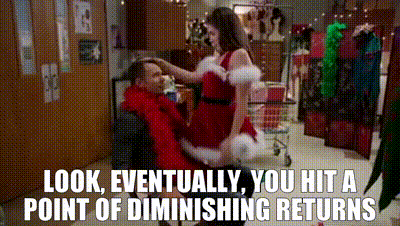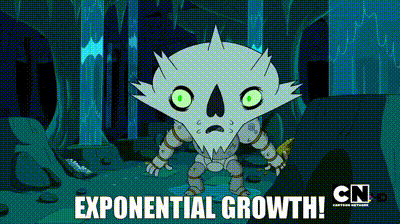The answers to your questions come from extrapolating the principles in yesterday’s post on power curves. Diminishing returns are logarithmic curves. Exponential increases are quadratic curves.
 ALT
ALTWe generally want to have diminishing returns when we don’t want players scaling off too far. We probably don’t want players obtaining 100% chances on combat events - 100% damage reduction or dodge rate would, for example, likely break our combat math. This kind of thing typically starts to show up when players start approaching the peak of the power curve. We need to keep providing incentives to chase the new content and loot, so we use diminishing returns to make them stronger but not to the point that they scale off to infinity or get too far ahead of everyone else. This way, if we ever plan on raising that level cap through some kind of expansion pack or newer, more challenging elder game content, we have a top end of where they could be and we can set the next tier of progression at a reasonable place.
 ALT
ALTWe typically use exponential power increases when we want players to feel like they’ve gained a lot of strength relative to where they used to be. This is especially visible when players return to the areas they’ve outgrown. Players feel like they’ve grown much stronger whenever they encounter an old foe who was once a grave threat but is now laughably easy.
 ALT
ALTYou may have surmised already that these don’t have to be mutually exclusive. We can support both exponential and logarithmic returns at the same time. Since power can scale in different dimensions (e.g. levels, gear, player skill, etc.), we can make logarithmic growth exist in some dimensions and exponential growth exist in others so that we can craft the overall experience that we want players to have by tuning those specific dimensions.
[Join us on Discord] and/or [Support us on Patreon]
Got a burning question you want answered?
- Short questions: Ask a Game Dev on Twitter
- Long questions: Ask a Game Dev on Tumblr
- Frequent Questions: The FAQ